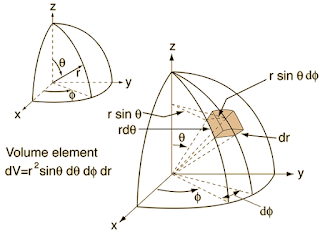The Expert Methodology
1. Carefully read the instructions and problem description.
2. Draw a picture of the physical situation. In astronomy, this often involves circles and lines. Make your drawing large enough to label clearly in the next step. Keep your lines straight. Slow down. It’s not a race to the finish line. If you'd like to have fun and draw cartoon characters or artistic scenes, this is fine. Indeed, it’s encouraged, especially if it helps you slow down. Just avoid obfuscating your drawing.
3. Label your drawing with the key physical variables. For example, distances should be labeled with \(D\), \(d\), \(L\),\(a\) (semimajor axis), \(R\), \(r\), etc. Use appropriate subscripts. Use these symbols consistently throughout the problem-solving process.
4. To the side of your drawing, list your known and unknown variables. An example of a known value:
$$ R_\oplus = 6.4 \times 10^8 {\rm cm} $$
An unknown value:
$$M_{M} = ?\ g$$
5. Identify and write down an equation that your intuition tells you would be appropriate for the problem at hand. Write this equation not in the generic terms presented in a textbook, but instead in terms of the key variables in your figure. For example:
$$ F_g = \frac{F M_\oplus M_M}{a_M^2} $$
6. Solve the equation algebraically for the unknown variable. Do not plug in numbers at this stage. Plugging in numbers prematurely will make your mathematical steps more difficult, your answer less general, and the TF’s grading more difficult. For example:
$$
\begin{align*}
F_g &= \frac{G M_\oplus M_M}{a_M^2} \\
a_M^2 F_g &= G M_\oplus M_M \\
M_M &= \frac{a_M^2 F_g}{G M_\oplus}
\end{align*}
$$
At this stage you may plug in my numbers. Notice that I did not do multiple steps in my head. It took me about 3 extra seconds to write out each intermediate step, but it takes ~ 10 minutes to go back and figure out where I made an algebraic mistake. Slow down. This is not a race. Focus on getting the steps right. The answer will flow naturally from a combination of the correct methodology and your physical intuition.
2. Draw a picture of the physical situation. In astronomy, this often involves circles and lines. Make your drawing large enough to label clearly in the next step. Keep your lines straight. Slow down. It’s not a race to the finish line. If you'd like to have fun and draw cartoon characters or artistic scenes, this is fine. Indeed, it’s encouraged, especially if it helps you slow down. Just avoid obfuscating your drawing.
3. Label your drawing with the key physical variables. For example, distances should be labeled with \(D\), \(d\), \(L\),\(a\) (semimajor axis), \(R\), \(r\), etc. Use appropriate subscripts. Use these symbols consistently throughout the problem-solving process.
4. To the side of your drawing, list your known and unknown variables. An example of a known value:
$$ R_\oplus = 6.4 \times 10^8 {\rm cm} $$
An unknown value:
$$M_{M} = ?\ g$$
5. Identify and write down an equation that your intuition tells you would be appropriate for the problem at hand. Write this equation not in the generic terms presented in a textbook, but instead in terms of the key variables in your figure. For example:
$$ F_g = \frac{F M_\oplus M_M}{a_M^2} $$
6. Solve the equation algebraically for the unknown variable. Do not plug in numbers at this stage. Plugging in numbers prematurely will make your mathematical steps more difficult, your answer less general, and the TF’s grading more difficult. For example:
$$
\begin{align*}
F_g &= \frac{G M_\oplus M_M}{a_M^2} \\
a_M^2 F_g &= G M_\oplus M_M \\
M_M &= \frac{a_M^2 F_g}{G M_\oplus}
\end{align*}
$$
At this stage you may plug in my numbers. Notice that I did not do multiple steps in my head. It took me about 3 extra seconds to write out each intermediate step, but it takes ~ 10 minutes to go back and figure out where I made an algebraic mistake. Slow down. This is not a race. Focus on getting the steps right. The answer will flow naturally from a combination of the correct methodology and your physical intuition.



Comments
Post a Comment